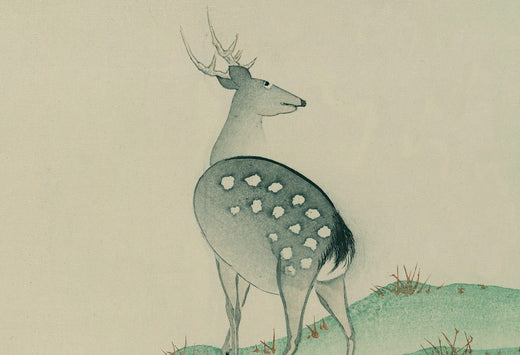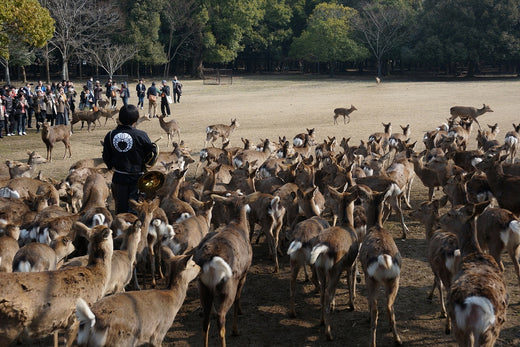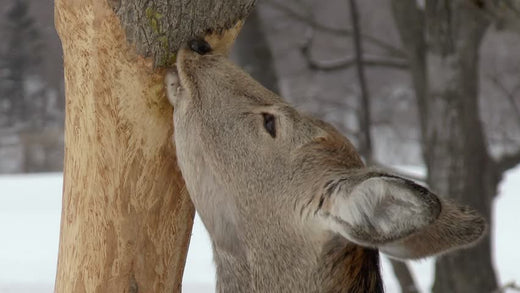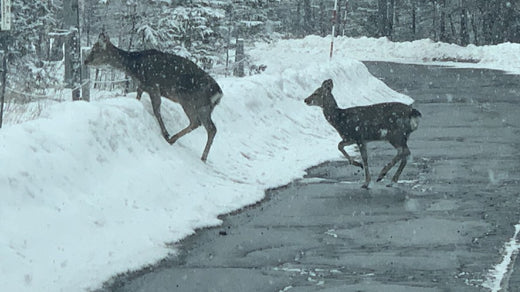In recent years, the habitat distribution of sika deer has been expanding, and the number of individuals is also increasing. As a result, the damage to agricultural and forestry products and forests is becoming more serious, and many local governments have decided that it is necessary to reduce the number of deer populations to limit the damage.
Reference article: Reality of forest damage caused by deer
Increasing hunting pressure is selected as a method to reduce the population, but trapping with box traps and tying traps is often adopted. This article describes the capture of deer by tying traps.
types of traps
Currently, various types of tying traps are sold by various manufacturers. In addition, the results of tying traps are greatly influenced by the skill and knowledge of the people setting them, so many hunters set up their own customized traps.Classification of tying traps
There are two main types: torso tying and leg tying. As the name suggests, there are two types of traps: one that binds the body of the target and one that binds the legs, but when targeting deer and wild boars, the leg-tie trap is almost always used.
Torso-hugging is rarely used now because prey can die from blood-letting in as little as 30 minutes, and there is a limit to the diameter of the hoop.
Structure of the tying trap
As for the structure, most of them are bound by the force of the spring, but the structure differs depending on the type of spring.
Actuation method
Most of them are operated by stepping into the cylinder, but there are others that are operated by the animal touching the kick string.
In addition, they are classified according to the direction of operation: the vertical pull type, in which the compressed spring expands upward (height) to tighten the tie ring, and the horizontal pull type, in which the force of the spring acts in the horizontal direction to tighten the tie ring. There is also a flip-up type in which the binding ring is guided upward by a frame attached to the footboard.
The following video shows the push spring flip-up type.
Things to consider before setting a trap
Please note that the following traps are prohibited.
・Things that lift the body
・Those with a wire diameter of less than 4mm
・There is no "return"
・Things without "tightening prevention metal fittings"
・The diameter (in the case of an oval, the smaller one) must exceed 12 cm . *Restrictions will be relaxed by the governor. Please contact the section in charge of each local government regarding diameter restrictions.
・Set 31 or more traps by yourself
How to catch a deer with a trap
As for the point when catching deer, as a premise, let's thoroughly eliminate human traces as much as possible. Deer's sense of sight, smell, and hearing will reveal human traces, so it is essential to ensure that no traces of humans or man-made objects remain.
Deer generally live in bright, open coppices. The first step is to look for tracks, droppings, hair and food marks of deer in such places, and to find the most frequently used animal trails.
It is also a good idea to observe with a trail camera. Once you find such a trail, predict where the deer will put its paws. Keeping in mind that deer have a habit of avoiding obstacles such as stones, tree branches, and fallen trees, set traps where deer feel safe to put their feet.
If you can't figure out which one is the main line by observing the animal path, you can add more traps (up to 30).
Anyway, choosing a place is important, so if you set a trap in an appropriate place, you can catch it more easily than a wild boar, which is very wary.
Also, if you set a trap with a wild boar as a target, there are times when other beasts are caught, but according to a hunter I know who targets wild boars, about 20 to 30% of the beasts other than the target are caught. that it is a deer.
Deer often appear in mud baths in wild boar nutbaths, so it would be a good idea to set traps in such places. Places that are likely to be frequently used for corner sharpening are also targeted as places to set up traps.
Finally, I would like to introduce a video of Mr. Katagiri who is one of the best tying trap masters in Japan. You can get a glimpse of how the master works and his thoughts, so please use it as a reference.

 箱罠
箱罠
 くくり罠
くくり罠
 パーツ類
パーツ類
 電気柵
電気柵
 自作キット
自作キット
 防獣グッズ
防獣グッズ
 監視カメラ
監視カメラ




 box trap
box trap
 tying trap
tying trap
 enclosure trap
enclosure trap
 Prevention and avoidance goods
Prevention and avoidance goods
 electric fence
electric fence
 trap surveillance camera
trap surveillance camera
 transportation goods
transportation goods
 Trap detection sensor
Trap detection sensor
 hunting supplies
hunting supplies
 hunting books
hunting books
 Anti-bird goods
Anti-bird goods
 Agricultural materials/machinery
Agricultural materials/machinery
 boar
boar
 deer
deer
 Kyon
Kyon
 monkey
monkey
 raccoon
raccoon
 Badger
Badger
 palm civet
palm civet
 raccoon dog
raccoon dog
 nutria
nutria
 mouse or rat
mouse or rat
 Mole
Mole
 bear
bear
 pigeon
pigeon
 Crow
Crow







